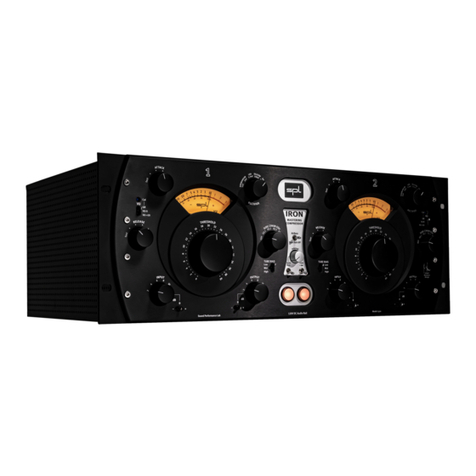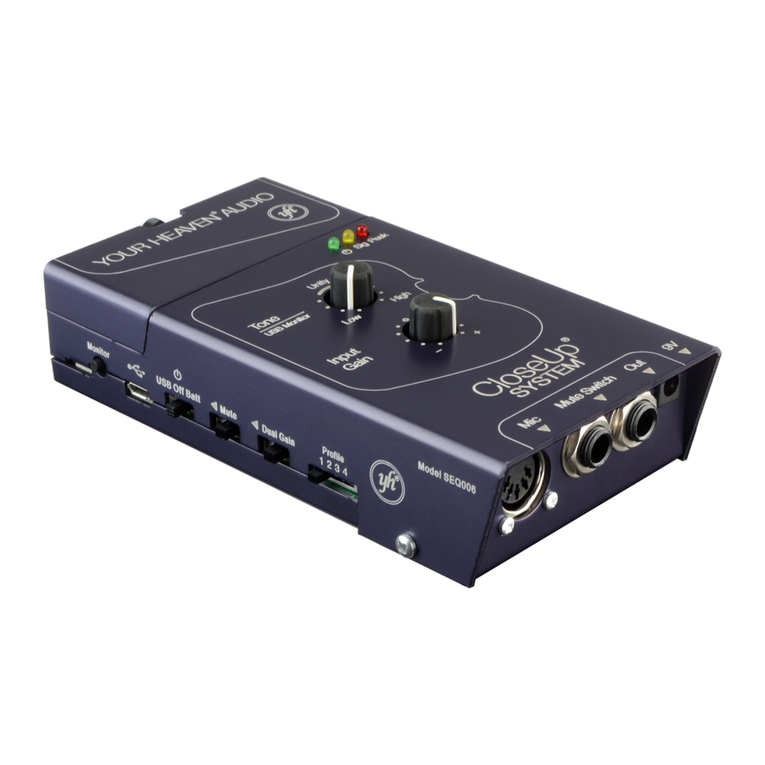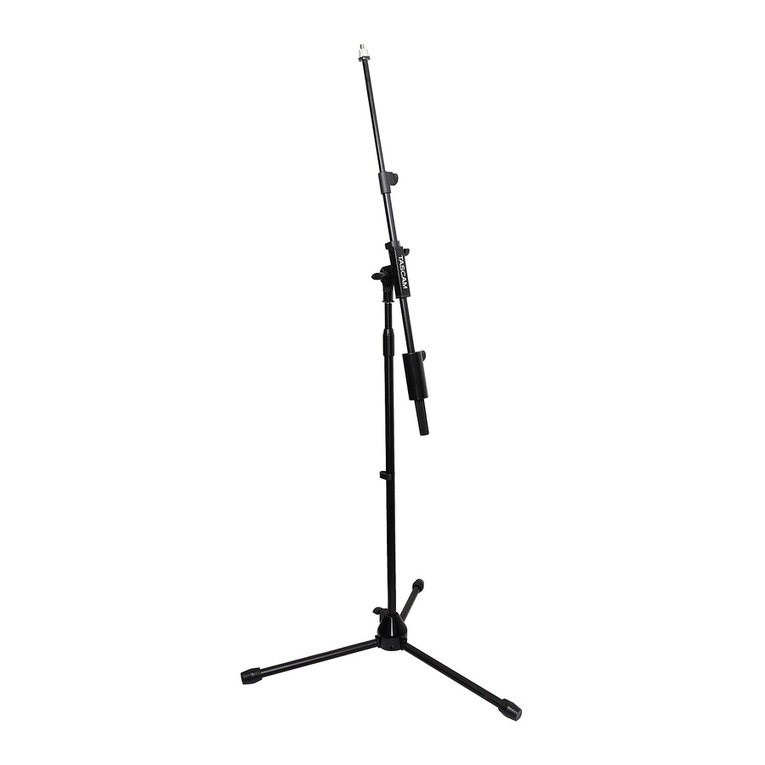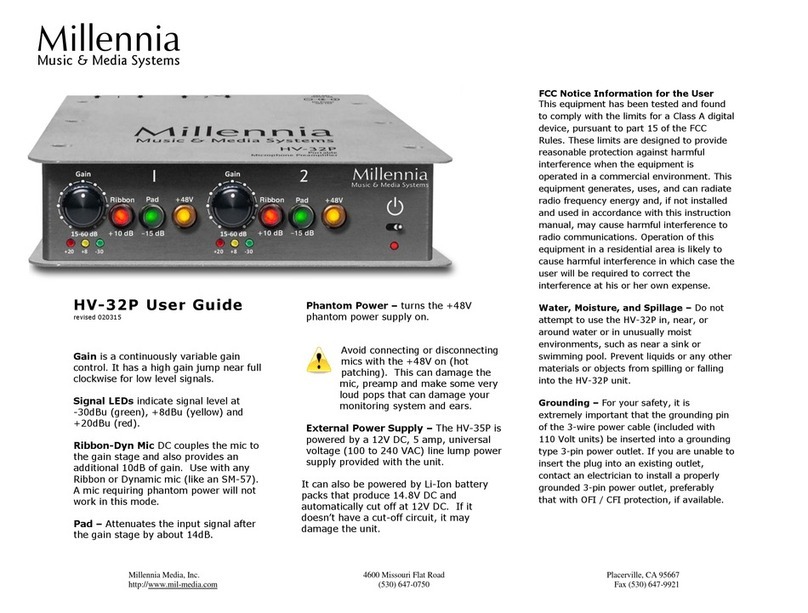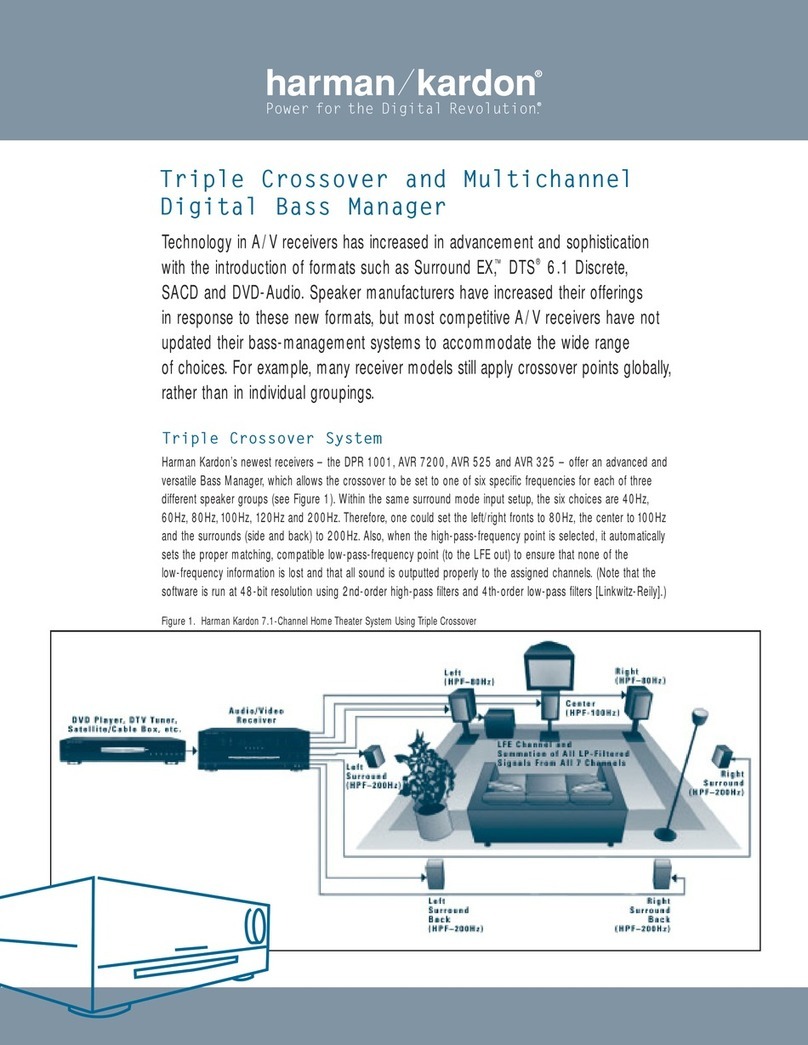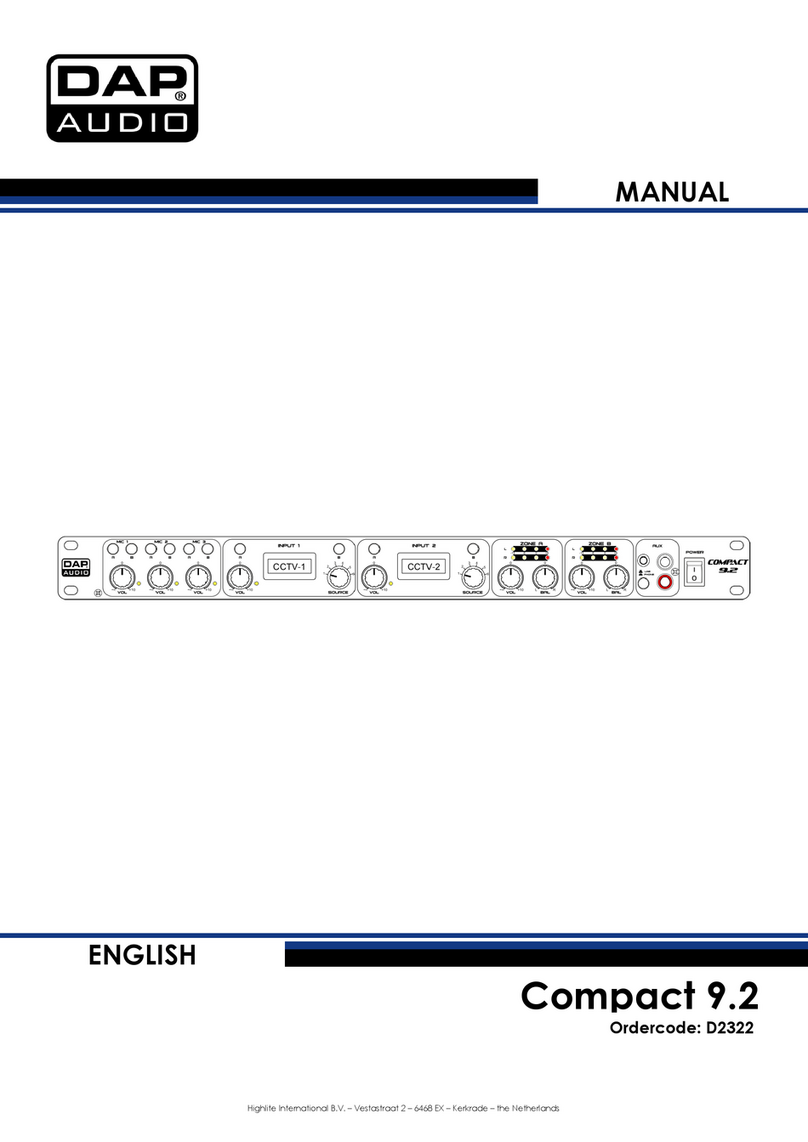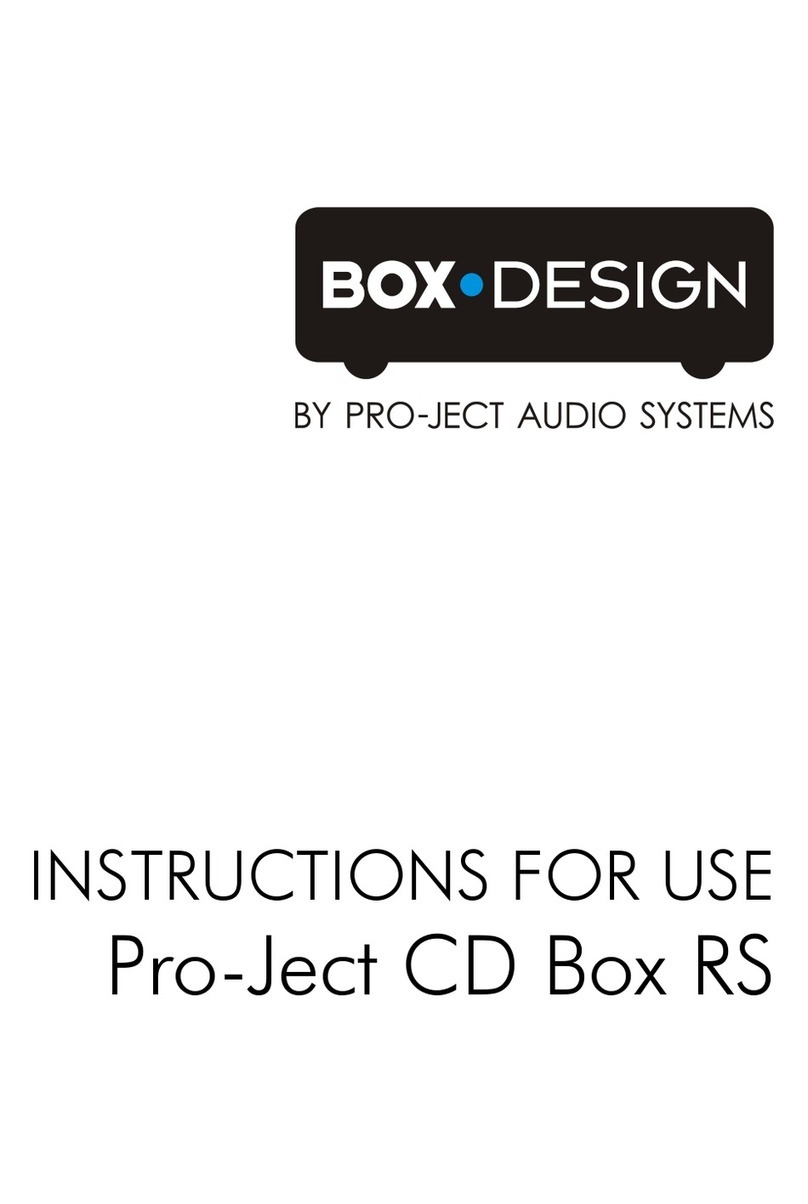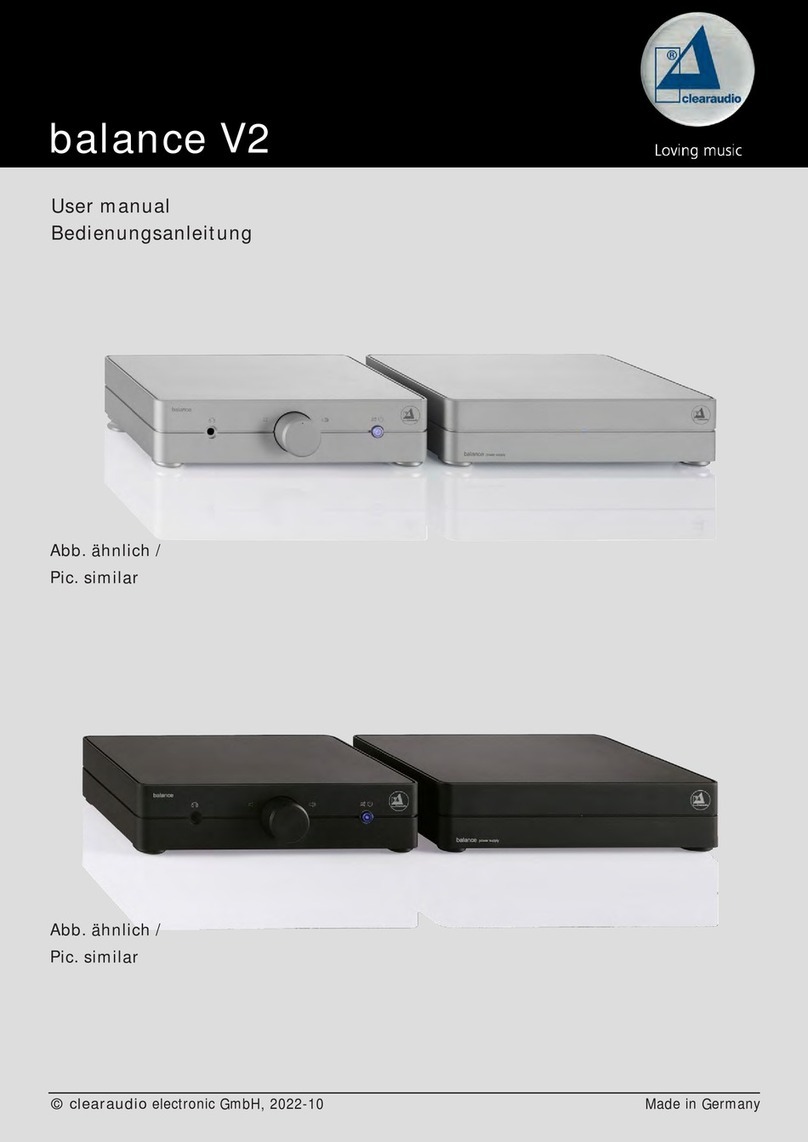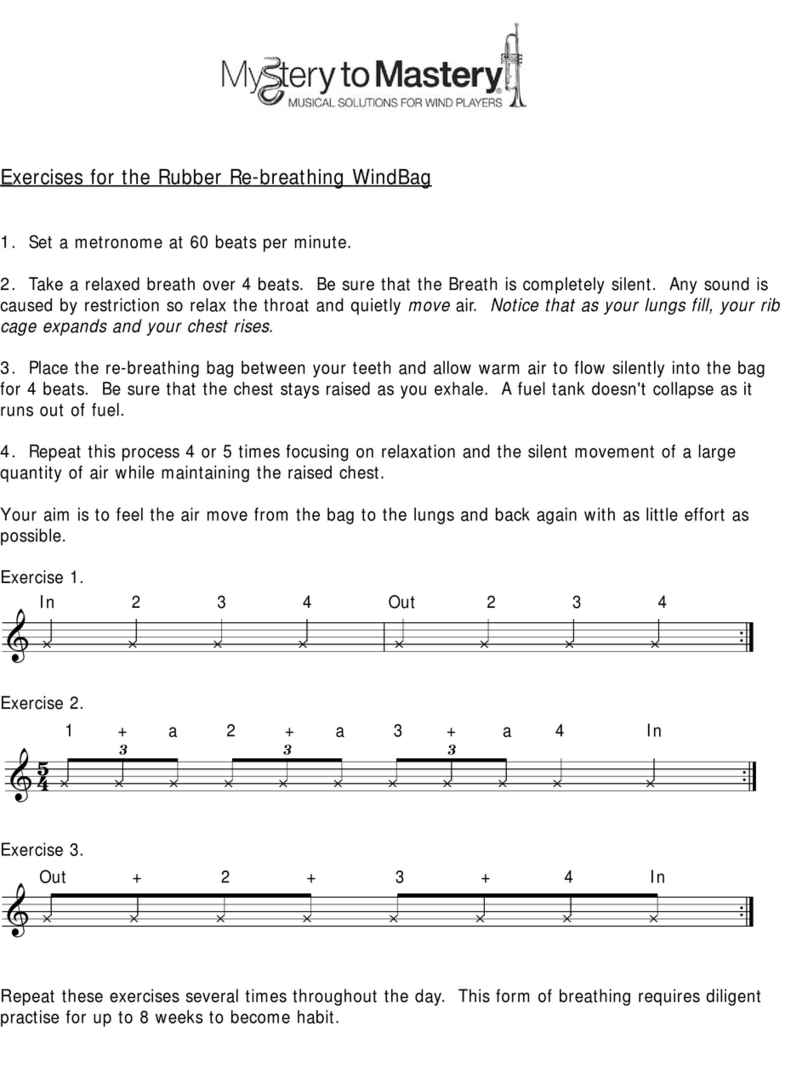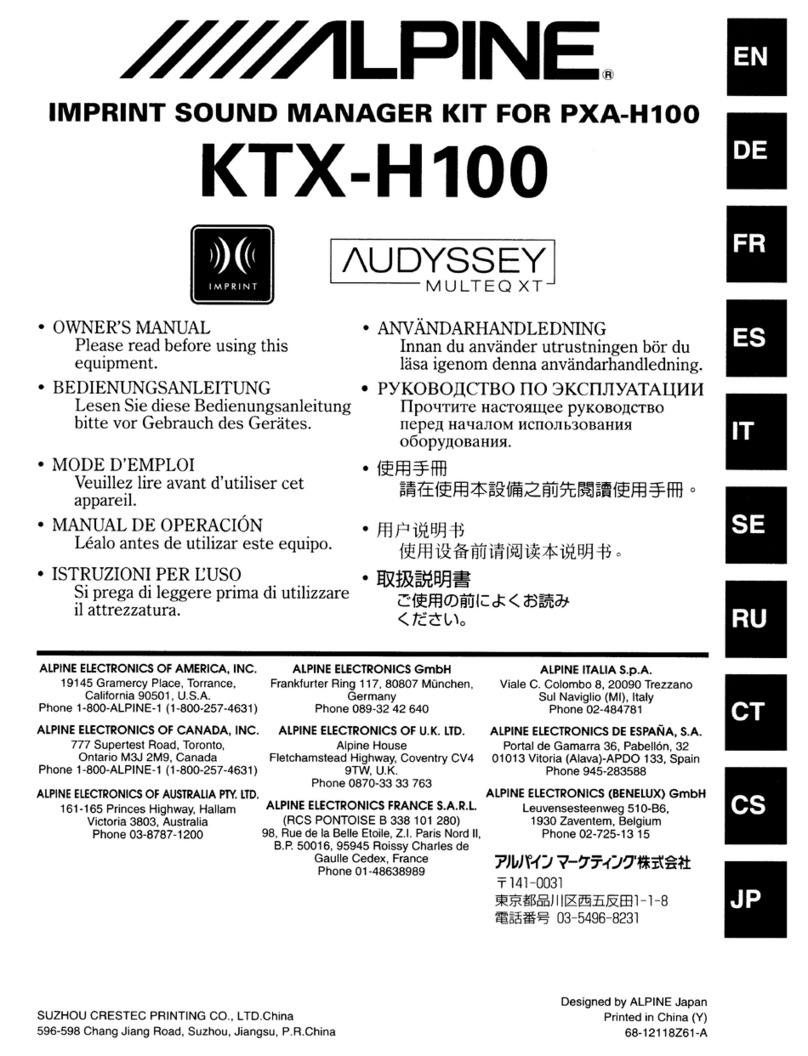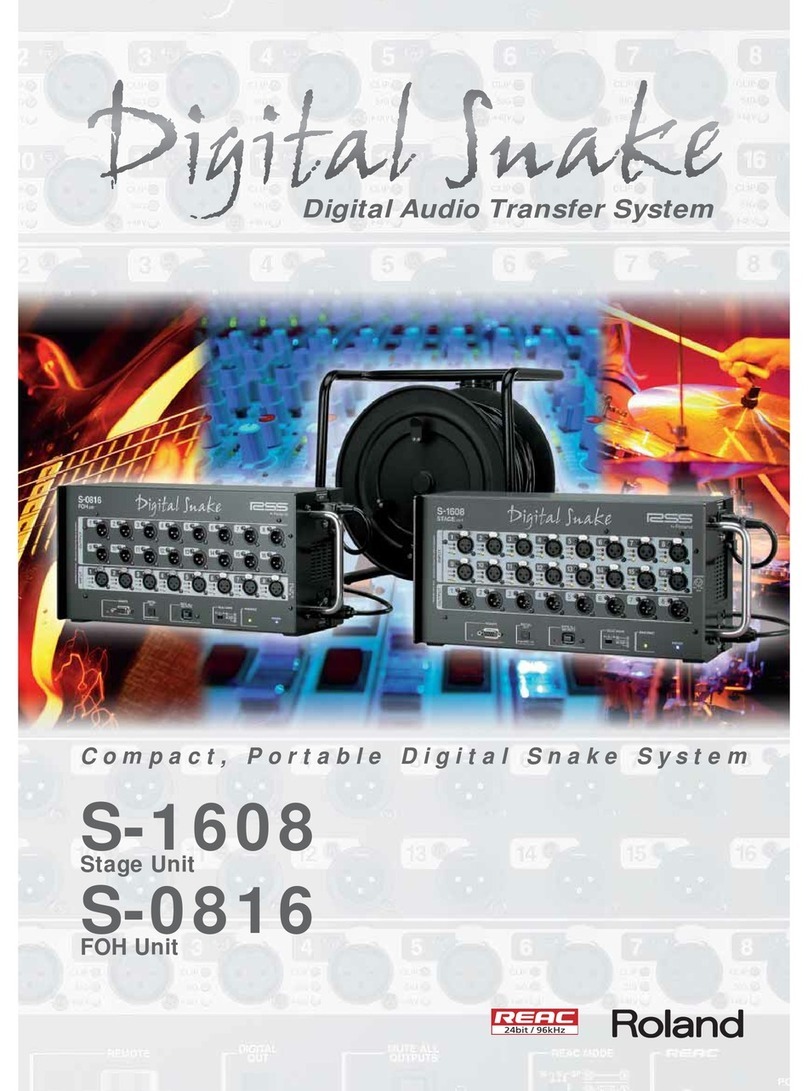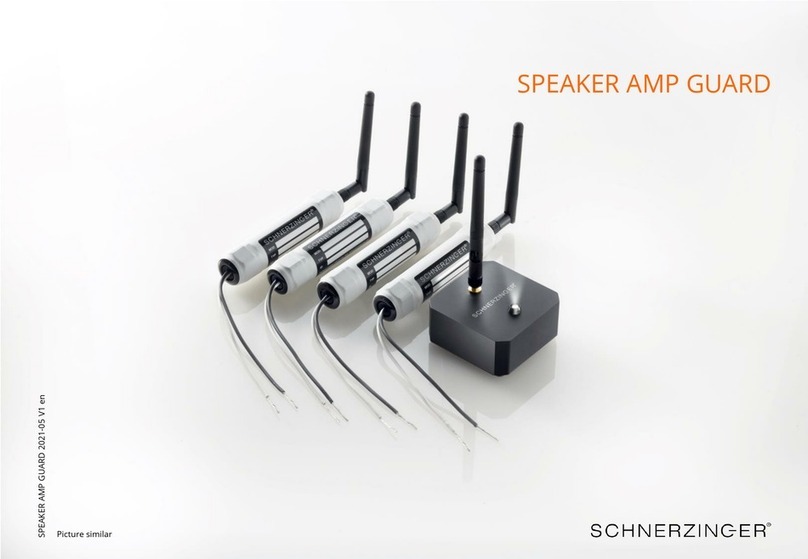SoundStudio STG-2412 User manual


!
SoundStudio!STG-2412!/!User!Guide!
2!
STG-2412 User Guide
!
Warning: Electrical Hazard ................................................................................................... 3!
Safety Instruction Sheet for STG-2412 ................................................................................ 3!
Product Overview ................................................................................................................. 4!
What’s in the box? .................................................................................................................................. 4!
Using STG-2412 for Mixing, Processing, and Recording ..................................................... 5!
Software Drivers ................................................................................................................... 7!
Configuration .......................................................................................................................................... 8!
SoundStudio STG-2412 Control Panel ................................................................................................. 11!
Connections ....................................................................................................................... 14!
Front Panel ........................................................................................................................................... 14!
Rear Panel ............................................................................................................................................ 15!
Specifications ..................................................................................................................... 16!

!
SoundStudio!STG-2412!/!User!Guide!
3!
Warning: Electrical Hazard
Safety Instruction Sheet for STG-2412
To ensure your safety, please read thoroughly before using the unit. Kindly observe all of these safety rules.
If you have questions about safe installation, please contact us at
https://soundstudio.com/contact-us
.
This device complies with Part 15 of the FCC Rules. Operation is subject to the following two conditions: (1) this device may not cause harmful interference, and (2) this device must accept any
interference received, including interference that may cause undesired operation.
Warning: Changes or modifications to this unit not expressly approved by the party responsible for compliance could void the user's authority to operate the equipment
NOTE: This equipment has been tested and found to comply with the limits for a Class B digital device, pursuant to Part 15 of the FCC Rules. These limits are designed to provide reasonable
protection against harmful interference in a residential installation. This equipment generates uses, and can radiate radio frequency energy and, if not Installed and used in accordance with the
instructions, may cause harmful interference to radio communications.
Under environments with electrical fast transients, the product may malfunction and require user to reset.
The unit may malfunction when there is radio interference on the AC mains & Ethernet line. The unit will revert to normal operation when the interference stops. It may require user to reset the
unit.
However, there is no guarantee that interference will not occur in a particular installation. If this equipment does cause harmful interference to radio or television reception, which can be
determined by turning the equipment off and on, interference by one or more of the following measures:
- Reorient or relocate the receiving antenna.
- Increase the separation between the equipment and receiver.
- Connect the equipment into an outlet on a circuit different from that to which the receiver is connected.
- Consult the dealer or an experienced radio/TV technician for help.
This Class B digital apparatus meets the requirements of the Canadian Interference-Causing Equipment Regulations.
CAN ICES-3 (B)/NMB-3(B)
1.
Keep this user guide for future reference.
2. Take notice of and comply with all warnings included in the
user guide or indicated on the device itself.
3. Do not expose this unit to rain or moisture. Do not spill water
or other liquids on this unit.
4. When cleaning the cabinet or other parts of this appliance, use
only a dry or slightly damp soft cloth.
5. Do not block any ventilation openings or interfere with the
proper ventilation of this unit. Install
in accordance with the
instructions.
6.
Do not defeat the internal ventilation fans.
7.
Do not use or store near any heat sources such as radiators, heat
registers, stoves, or other heat-
producing appliances.
8.
To avoid the risk of electrical shock, do not touch any exposed
wiring while the unit is in operation.
9. Protect the power cord from being walked on or otherwise damaged by
items placed on or against it. Particular attention should be given to the
plugs, receptacles, and the point where the cord exits the appliance.
10. Only use attachments/accessories specified by the manufacturer.
11. Unplug this unit and all connected electrical equipment during
lightning storms or when left unused for a long period of time.
12. Refer all servicing to qualified service personnel. Servicing is required
when the appliance has been damaged in any way or fails to operate
normally.
13. The socket-outlet shall be installed near the equipment and shall be
easily accessible.
La prise
d’alimentation
utilisée
doit
être
proche de l’appareil et
facilement accessible.

!
SoundStudio!STG-2412!/!User!Guide!
4!
Product Overview
SoundStudio STG-2412 is a rugged stage box with 24 analog inputs and12 line outputs. It’s designed for both stage and
studio applications. All connections on this 4U rack-mountable device are on the front panel, except the mains
connection and power switch, which are on the rear panel.
In addition to analog mic and line inputs and line outputs, there are inputs and outputs for AES, word clock, and MIDI.
There’s also a SoundGrid-compliant Ethernet port network. All device configurations including Preamp and Clock are
software controlled.
STG-2412 operates within in a SoundGrid Ethernet network, so it’s an ideal interface for the Waves eMotion LV1 or
MultiRack. The SoundGrid network can also be used with a DAW for recording.
What
’s in the box?
1 Cat 6 Ethernet cable
2 Mains cables
3 Mains safety clips
4 Registration card with serial number

!
SoundStudio!STG-2412!/!User!Guide!
5!
Using STG-2412 for Mixing, Processing, and Recording
STG-2412 uses Waves SoundGrid protocol to connect to an eMotion LV1 mixer, to a MultiRack processor, and to any
DAW. A typical SoundGrid network consists of a host computer, a SoundGrid server, and I/O devices, all connected with
Cat 5e (or better) Ethernet cables via a 1GB Ethernet switch.
This setup allows for LV1 mixing or MR processing and can be used in parallel a with a DAW.
Maximum distances between devices vary depending on configuration. However, maximum cable length between I/Os
and switch is usually 100 meters. When connecting the Ethernet cable to an STG-2412, make sure that the connectors
and the cable are protected from stage equipment and traffic. For SoundGrid protocol cable and switch specifications,
visit the Waves Support desk: http://www.waves.com/support.
Keep your SoundGrid network clean. Make sure that the host computer network port that you use for the SoundGrid
network is not used for other networks (such as internet).

!
SoundStudio!STG-2412!/!User!Guide!
6!
Connect multiple SoundStudio I/O units within a SoundGrid network for a high channel count.
In this example, there are three I/O devices onstage. These are used for onstage microphones and monitoring. In the
FOH are two SoundGrid servers (one primary and one redundant) and one I/O. This example has an external control
surface and a DAW for recording.

!
SoundStudio!STG-2412!/!User!Guide!
7!
Software Drivers
The STG-2412 stage box can be used with a number of Waves SoundGrid software applications, including the eMotion
LV1 live mixer, the MultiRack live plugin host, and SoundGrid Studio. STG-2412 software drivers are installed using
Waves Central, a Waves application for downloading software and managing licenses.
To install the driver, you will first need to download Waves Central if you do not already have it installed on your
computer. Open Waves Central and log in. Select “Install” and choose “Online.” This shows all products on your Waves
Cloud, including the STG-2412 driver. Locate the driver for your SoundStudio product. If the driver doesn’t appear in the
list, check “All Waves Products.” Select the correct driver and click “Install.”
When the installation is finished you’ll need to reboot your computer.
For your convenience, complete software download instructions are also available online.
Launch the Waves Central Application
Select the SETUP tab
Select ONLINE to see your Waves License Cloud
Locate and selecte the STG-2412 driver
Click INSTALL

!
SoundStudio!STG-2412!/!User!Guide!
8!
Open the SoundGrid Studio application.
Select the SETUP window.
Choose the SYSTEM INVENTORY tab, which is
where devices are assigned.
Configuration
SoundStudio I/O devices must be assigned to a SoundGrid host application. This is done within the setup system
inventory page. Assignment is similar in all SoundGrid host applications. Refer to the application’s user guide for detailed
instructions.
In this example, a STG-2412 will be assigned to SoundGrid Studio.

!
SoundStudio!STG-2412!/!User!Guide!
9!
If the STG-2412 is not already assigned to the
SoundGrid host, click on the arrow in an empty device
slot. Choose the device from drop-down menu.
THE 2412 DEVICE ICON WILL APPEAR
IN THE RACK
ASSIGN 2412 TO A DEVICE RACK
Assign STG-2412 to the Host Application
I/O devices are assigned in the Device Racks of the System Inventory tab. You can assign the STG-2412 to any Device
Slot.

!
SoundStudio!STG-2412!/!User!Guide!
10!
Click the GEAR button to open the
STG-2412 control panel.
Access the STG-2412 Control Panel
Use the STG-2412 Control Panel to adjust preamps and channel outputs, and to manage device clocking. Firmware
version, serial number and other hardware information are also displayed in the control panel.

!
SoundStudio!STG-2412!/!User!Guide!
11!
SOURCE SELECT
Request a clock source. If this
source is not available, the
device will poll all other
potential clocks. If there are
no available clock sources,
the device will switch to
internal clock.
SAMPLE RATE
When the device is the SOE
master and is set to Internal
clock, the drop-down menu is
used to set the sample rate.
When the STG-2412 is not
the clock master, the window
displays the sample rate.
STATUS
Displays device network sync
status
SOE
Indicates SOE status: on/off; SOE
Master/Slave
CURRENT CLOCK SOURCE
Indicates the actual clock source
LOAD/SAVE
Enables you import and export
preamp settings for later use.
Available in all tabs.
SoundStudio STG-2412 Control Panel
There are five tabs in the control panel. We’ll focuses on three of them: Clock, Input, and Output.
Clock Tab
Use the Clock tab to manage the clock relationship between the STG-2412 and the SoundGrid network. In this example
the device is locked to the network via Sync Over Ethernet (SOE). This is the most common configuration. You can also
lock the STG-2412 to another clock source via AES or word clock.
Go back to the Setup page to establish which device is the SoundGrid SOE network master. Refer to the SoundGrid
Studio user guide or the eMotion LV1 user guide to learn more about clock in a SoundGrid network.

!
SoundStudio!STG-2412!/!User!Guide!
12!
MIC/LINE SELECT
Select input: mic preamp or
line input (XLR and TRS).
48v ON/OFF
PREAMP GAIN and
INPUT METER
CLIP INDICATOR SELECT
Adjust the clip indicator level of
the entire I/O.
ID
Click this button and a light
will blink on the STG-2412 device.
AES INPUT METER
MONITOR
Shows the level of the monitor
headphone jack on the front
panel
Input Tab
STG-2412 has 26 inputs: 24 analogue and 2 digital. Use the Input tab to control Input I/O parameters. Channel input
controls set here, are avalible in the Mixer and Channel windows of the eMotion LV1 and in other SoundGrid
applications.

!
SoundStudio!STG-2412!/!User!Guide!
13!
HEADROOM SELECT
Choose between +18dB and
+24 dB mixer headroom
CHANNEL OUTPUT METER
AES OUTPUT METER
MONITOR METER
Output Tab
The Output tab is used primarily to set the output headroom and monitor output levels. There are 12 analogue and 2
digital outputs.

!
SoundStudio!STG-2412!/!User!Guide!
14!
AES
I/O
MIC / LINE INPUT
[24]
LINE OUTPUT
[12]
WORD
CLOCK
I/O
NETWORK
PORT/
STATUS
INDICATOR
MIDI
I/O
HEADPHONES
/ VOLUME
Reset
Clip / 48V
Connections
Front Panel

!
SoundStudio!STG-2412!/!User!Guide!
15!
ON/
OFF
INPUT:
AC 100-240V
50-60Hz 0.3A
Rear Panel

!
SoundStudio!STG-2412!/!User!Guide!
16!
Specifications
XLR Input
Input Gain:
Adjustable from 0 dB to 60 dB in steps of 1dB
Frequency Response:
+0/-0.2 dB, 16 Hz to 21 kHz @ 48 kHz sample rate (+4dBu input @ +20 dB gain)
+0/- 0.2 dB, 17 Hz to 40 kHz @ 96 kHz sample rate (+4dBu input @ +20 dB gain)
Dynamic Range: (Measured bandwidth limited 20 Hz to 20 kHz) 110 dB Gain = 0
EIN (Gain 60, 150 ohms) -128 dBu A weighted
THD+N (Measured at 1 kHz @ +4dBu, Gain = +20) 0.0023%
Phase Response:
+/- 10 Deg 20 Hz to 20 kHz
Input impedance : 2k ohms
48V phantom power available per input
TRS Input
Input Gain:
Adjustable from 0 to 60 dB in steps of 1dB
Frequency Response:
+0/-0.2 dB, 16 Hz to 21 kHz @ 48 kHz sample rate (+4dBu input @ +20 dB gain)
+0/- 0.2 dB, 17 Hz to 40 kHz @ 96 kHz sample rate (+4dBu input @ +20 dB gain)
Dynamic Range: (Measured bandwidth limited 20 Hz to 20 kHz) 110 dB Gain = 0
EIN (Gain 60, 150 ohms) -128 dBu A weighted
THD+N (Measured at 1 kHz @ +4dBu, Gain = +20) 0.0023%

!
SoundStudio!STG-2412!/!User!Guide!
17!
Phase Response:
+/- 10 Deg 20 Hz to 20 kHz
Input impedance: 10k ohms
XLR Balanced Outputs
Selectable maximum output level: +18 dBu or + 24 dBu
Frequency Response:
+0/-0.2 dB 16 Hz to 22 kHz @ 48 kHz sample rate
+0/-0.2 dB 17 Hz to 40 kHz @ 96 kHz sample rate
THD+N (Measured at 1 kHz, Gain = 0) 0.001%
Output impedance: 40 ohms
Headphones output
1 watt per channel into 32 Ohm headphones.
Digital I/O
AES-3, AES-EBU Stereo Output. Output sample rate 44.1 kHz to 96 kHz
Word clock input: Standard 5 Volt square wave. 50% duty cycle.
Word clock output: 1X sample rate Standard 5 Volt square wave. 50% duty cycle.
Word clock Input: 1X sample rates of 44.1 kHz, 48 kHz, 88.2 kHz and 96 kHz.

!
SoundStudio!STG-2412!/!User!Guide!
18!
Power
Universal input power supply 100V-240 VAC, 50/60 Hz, 1.0 Ampere
Dimensions
482 x 177 x 254 mm
Weight
8.9 kg (19.6 lb)
Specifications subject to change without notice
Table of contents
